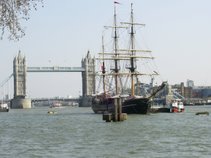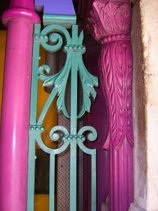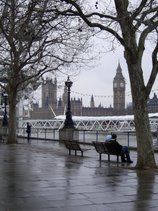Yesterday I added a photo to the blog page title header. I guess most people would recognise the skyline. And I suspect most would incorrectly name the clock tower. No it is not Big Ben, though people refer to it by that name. Now I could set the
Quiz of the Day question and ask -
what is the name of the tower? But with Google ready at hand, it would be pointless!!
It’s in fact St Stephen’s Tower. So Big Ben is the clock not the tower - wrong. Big Ben is the 13.5 ton, 9ft-5” diameter bell which strikes the hour chimes. There are four other bells that chime the quarters.
So the building on the left is the Houses of Parliament, again strictly speaking no - it’s the Palace of Westminster in which the two houses of parliament are housed.
The clock tower is one of the iconic images of London. The latest visual icon is located on the other bank of the River Thames - The London Eye, pictured in the 24th February blog. The oldest part of the Palace dates from 1097, while the London Eye was opened in February 2000.
The two icons characterise the contradiction that is London. London is perceived as an old capital, it was settled by the Romans in 43AD, yet it is a modern continually changing city.

The above view from Hungerford Bridge
(click on it for a larger image) is looking in the opposite direction to the Palace of Westminster, towards the City of London. Another contradiction, London is made up of a number of cities, The City of Westminster, Southwark and of course The City of London.
“The City“, also known as the “Square Mile“, is the district first settled by the Romans. The three towers on the far left form part of the Barbican complex. Built between 1965 & 76 consisting of among other things: apartments, concert halls, theatre, a Business School and the Museum of London. The musium located in a modern building is adjacent to parts of the original London Wall built by the Romans. If you visit London with children the musium is a must see place - and its free!
To the right is one of the many Church spires seen on the London skyline - the wedding cake tiered spire of St Brides. The present church built in 1672 is the eighth located on the site, which has been a place of worship for two thousand years.
Just to the left of St Brides you can just about make out the dome of The Old Bailey - the Central Criminal Court. On top of the dome stands the figure of justice, holding a sword in her right hand and the scales of justice in the other.
Moving to the right we see two examples that typifies changing London - tower cranes.
In the centre stands the jewel of the City, St Paul‘s Cathedral. Built to replace the cathedral destroyed in the Fire of London in 1666; Christopher Wren commenced designing it in 1668 and the construction was completed in 1708. The great dome has witnessed so many state occasions: The wedding of Prince Charles to Diana, the funerals: of Sir Winston Churchill, Lord Nelson and the Duke of Wellington.
The City is the worlds leading international financial and business centre. And the home of Fat Cats. This year £19bn, US$ 37.4bn was paid out as annual bonuses, one individual getting £52 million - obscene?
No I’m not going to rant, today I’m a well behaved Grumpy Old Fart, YesBut!
Lets finish today with another iconic building, the bullet shaped 30 St Mary Axe, affectionately known as the “Gherkin”. The 590ft Swiss Re Tower was designed by Sir Norman Foster, taking three years to construct it was completed in 2004.
I haven’t mentioned The Iconic London structure. I’ll leave that for tomorrow.
In the mean time, I would be interested in hearing what you consider are the top 5~10 iconic images (structure or geographical features) in the World.
















